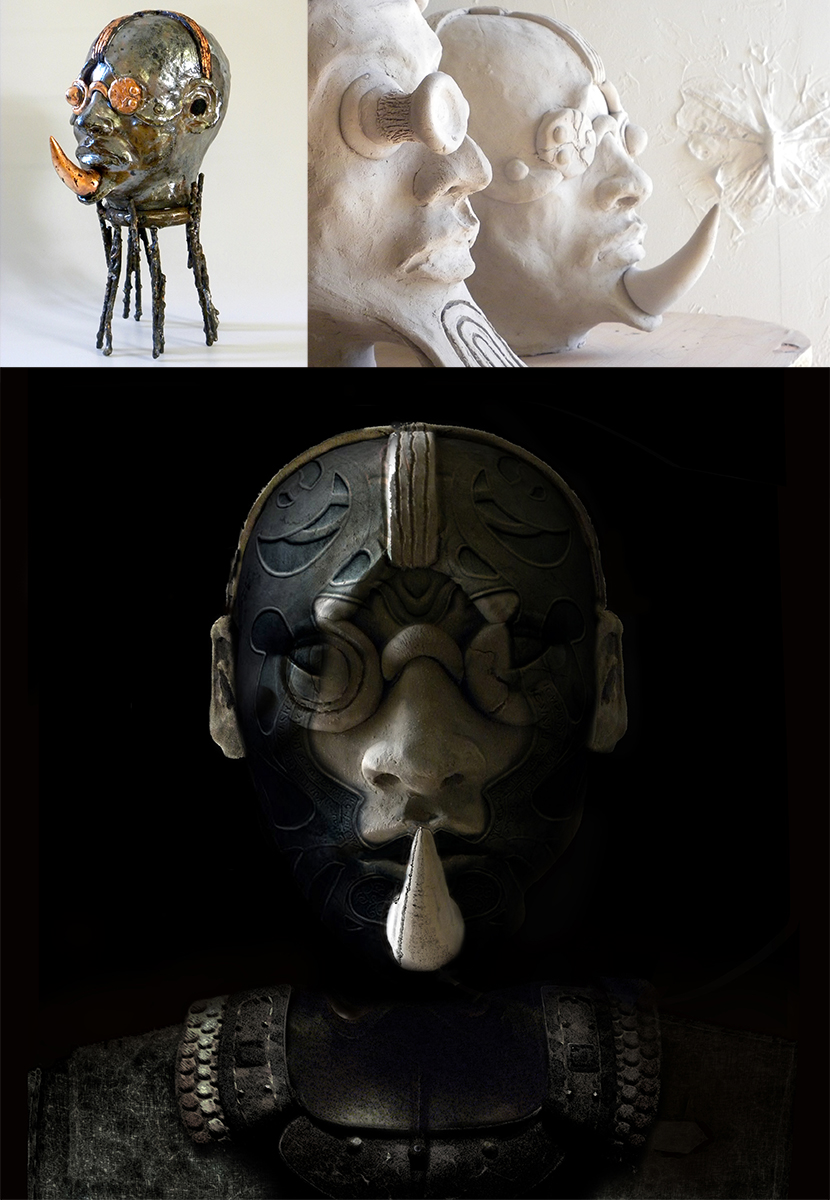
“Living Ruins” is a sculptural response to the war in Ukraine. It is an exploration of resilience through destruction, an attempt to transform visions of horror into symbolic hope. This sculpture contains many threads of reflection; the irreducible transience of time, disintegration, ecological disaster, human sacrifice, and … that which cannot be spoken of.
The work is constructed by assembling and stacking abstract passageways of metal. Recycled materials are stitched together with solder while others are fused with epoxy. The torn, mutilated materials recall the fragility of life.
Ruins of war are like survivors, abstract warriors, blackened, still standing amidst the destruction. These ruins, lapidated by projectiles, are inhabited by voices that cannot be silenced. Split and flayed in abstract patterns, they refuse to topple over, to collapse under the weight of oppression. Their smoldering skeletons stand like towering creatures, clinging fiercely to the roots of their foundations.
Despite everything, hope burns in the hollows of the scorched abyss of war. The shadow cast by the work echoes the etching of false shadows burned on the battlefields. Shadows are ephemeral. They too, like war, will eventually fade away.
Exhibition “Transgression”, Madawaska Historical Museum, Edmundston, NB

For quite some time, I’ve been using my bisque sculptures as elements for installations and also as models for my digital images. On this photo, “Rhino Man” is seen at the bisque stage which I used as a model for the digital image and also as the finished sculpture.
“Rhino Man” is part of a series titled “Men-agerie”. A menagerie is a place where rare animals are kept, either for study or for show to the public. This series forms a motley crew of odd, mismatched and undisciplined individuals. Archetypal exemples of a motley crew are commonly found in fantasy and science fiction. At the moment, this series has 10 individuals. More members of this “motley crew” are on the way …

In 2011, I created the first of a series of wall sculptures titled “Womb Shells” sorts of chestplates, shields, pelt-cradles, shelters, armours, echo chambers, choc absorbers, bastions, envelopes, shells, ramparts, enclosures, sacred vessels, refuges, cocoons, dens, buffers …
Like distant echoes, the “Womb Shells” resonate through time with an ancient power that is rooted in the archaic remnants of our ancestral mothers. Some are belly chambers that house creation, others are tombstone chambers preserving memories of extinct lives. They vibrate with the power of elemental forces, the whispers of wild creatures or with mysteries.
These “Womb Shells” are defensive barriers that protect their symbolic content from the chaotic winds of time. These matrices are designed to honor creation and life. This series is ongoing.

Cabinets of curiosities were pieces of furniture, or sometimes rooms, where singlar and improbable things were stored and exhibited: heterogeneous mixtures of naturalia, works of artificialia, fascinating objects of exotica or contraptions of scientifica. Often subjects of ostentation, luxury or oddities, these cabinets were made up of a collection of the most diverse objects. True spaces of wonders filled with monstrosities, skeletons, hybrid animals, collections of rare specimens and objects of amusement; they were also often overflowing with ambiguous or surprising works of art.
A view inside the exhibition space for the exhibition “Cabinet of Curiosities” showing from November 4, 2021 to January 21, 2022 at the Edmundston Art Center.





